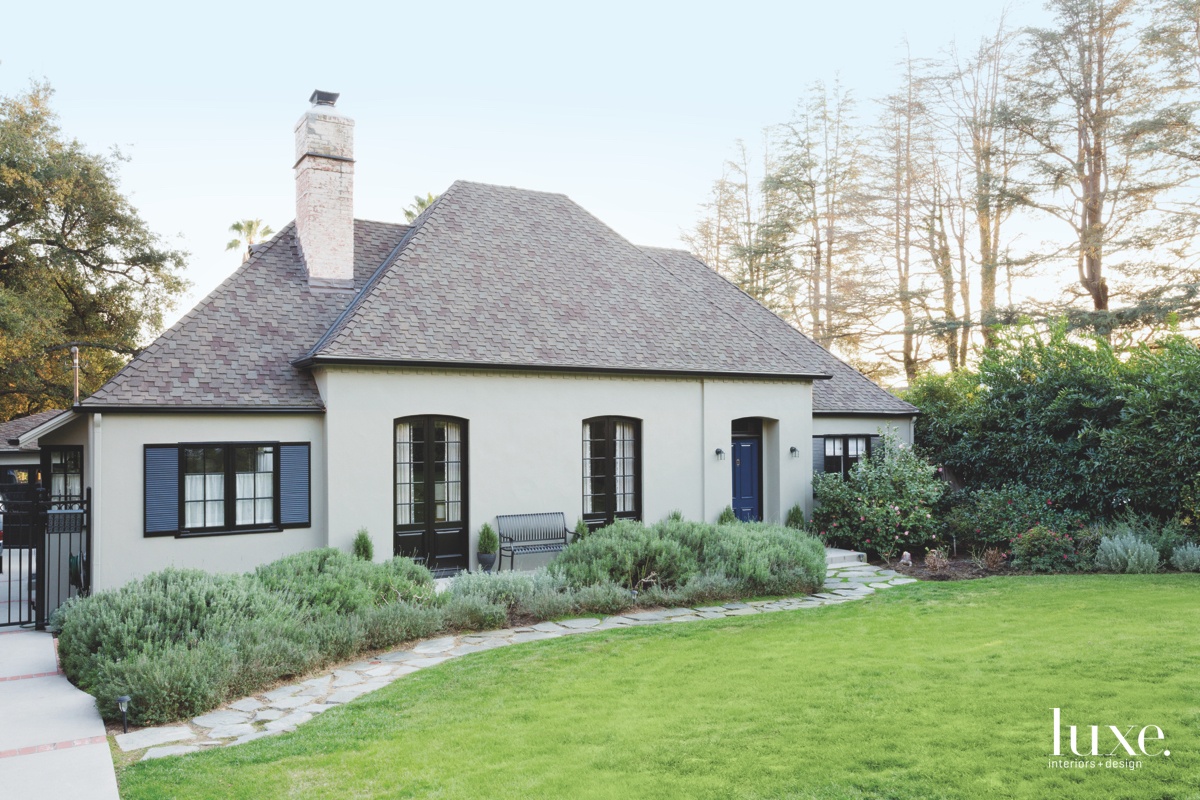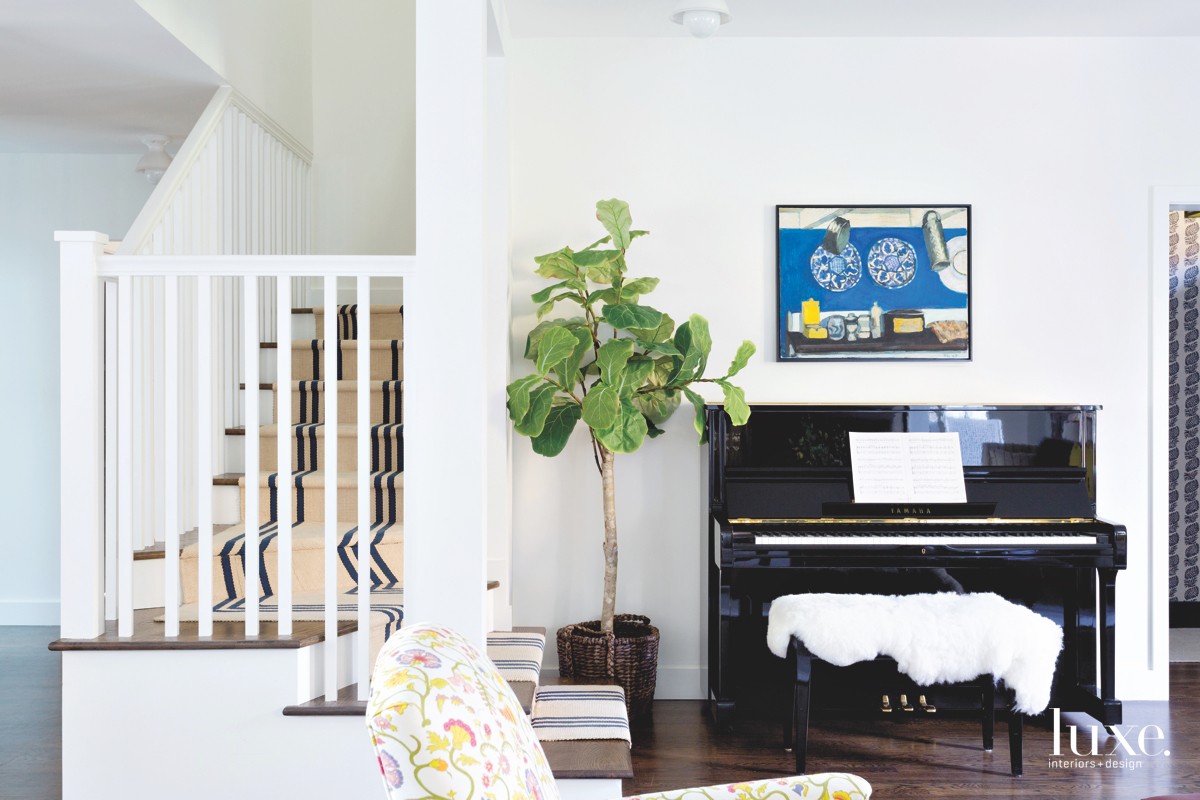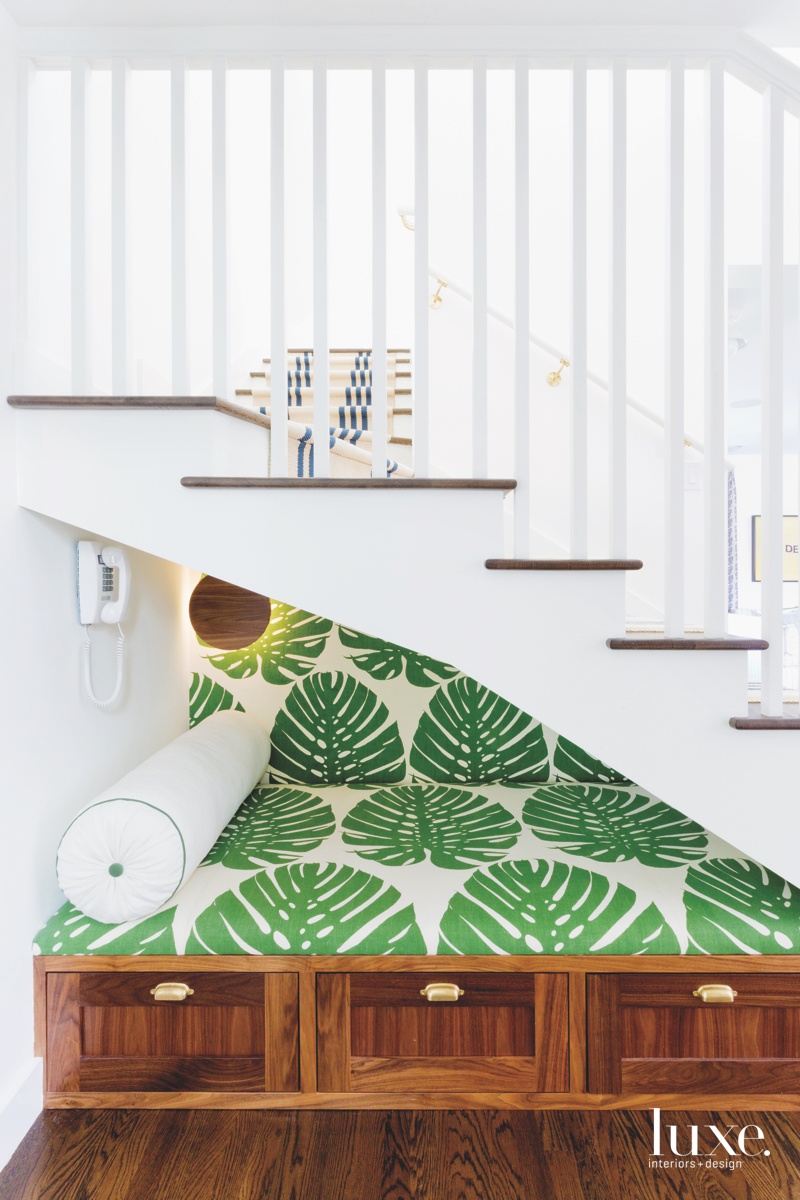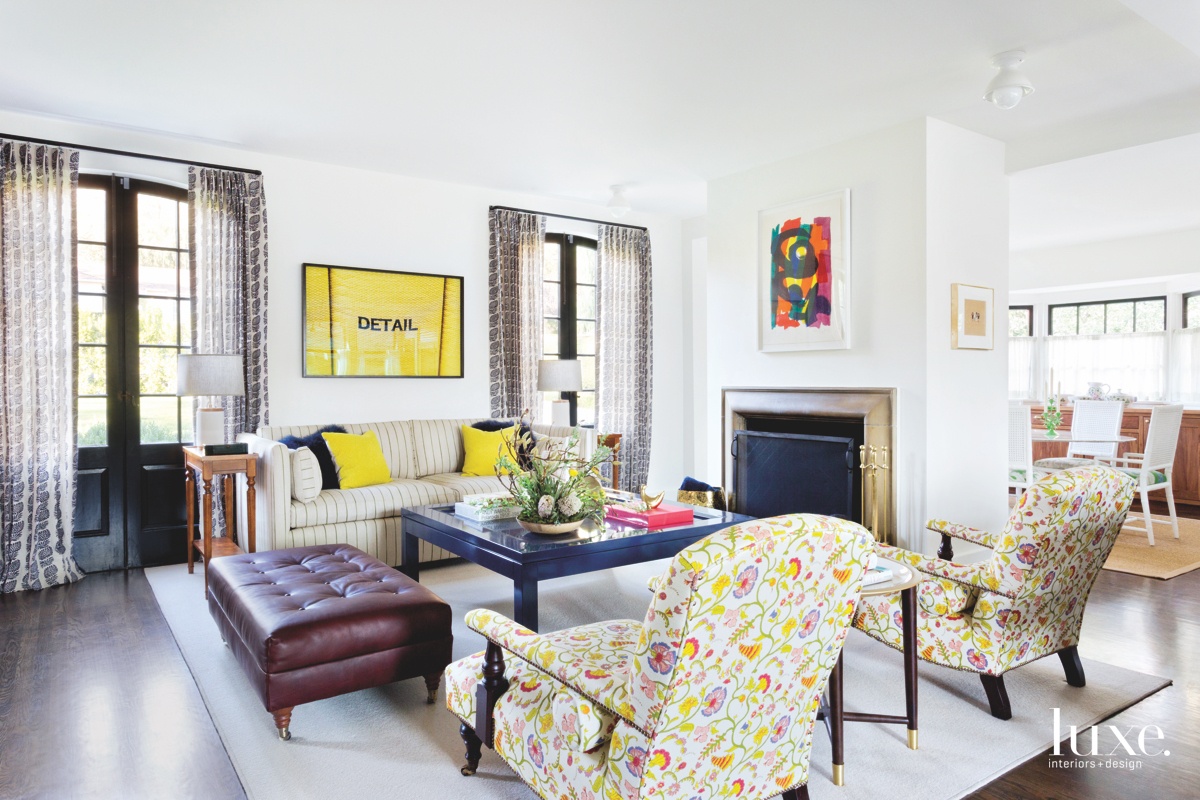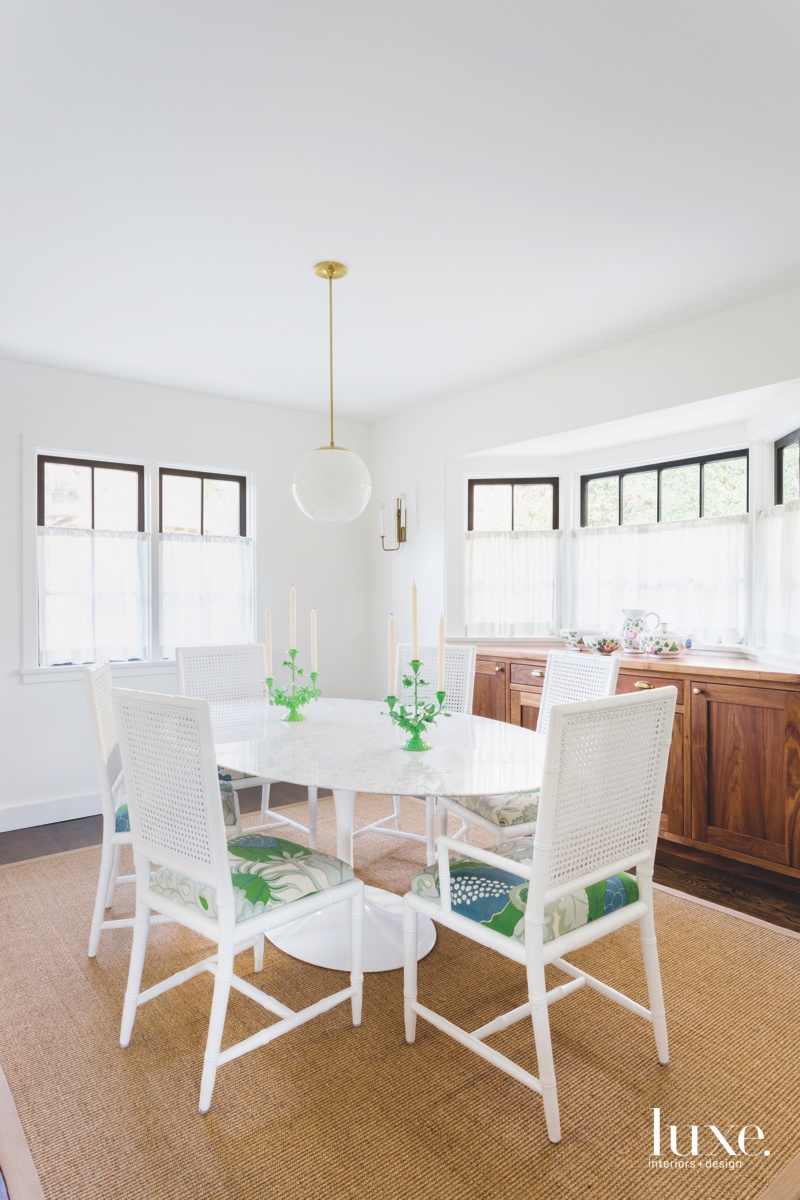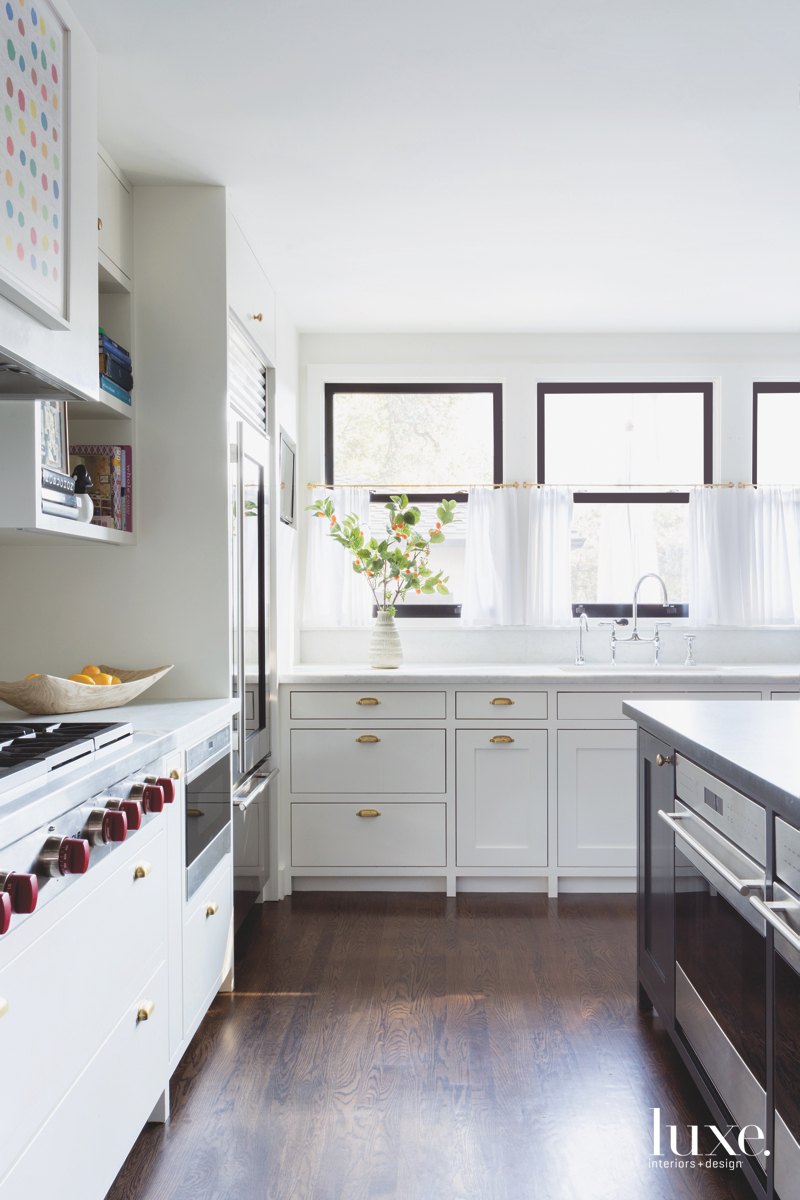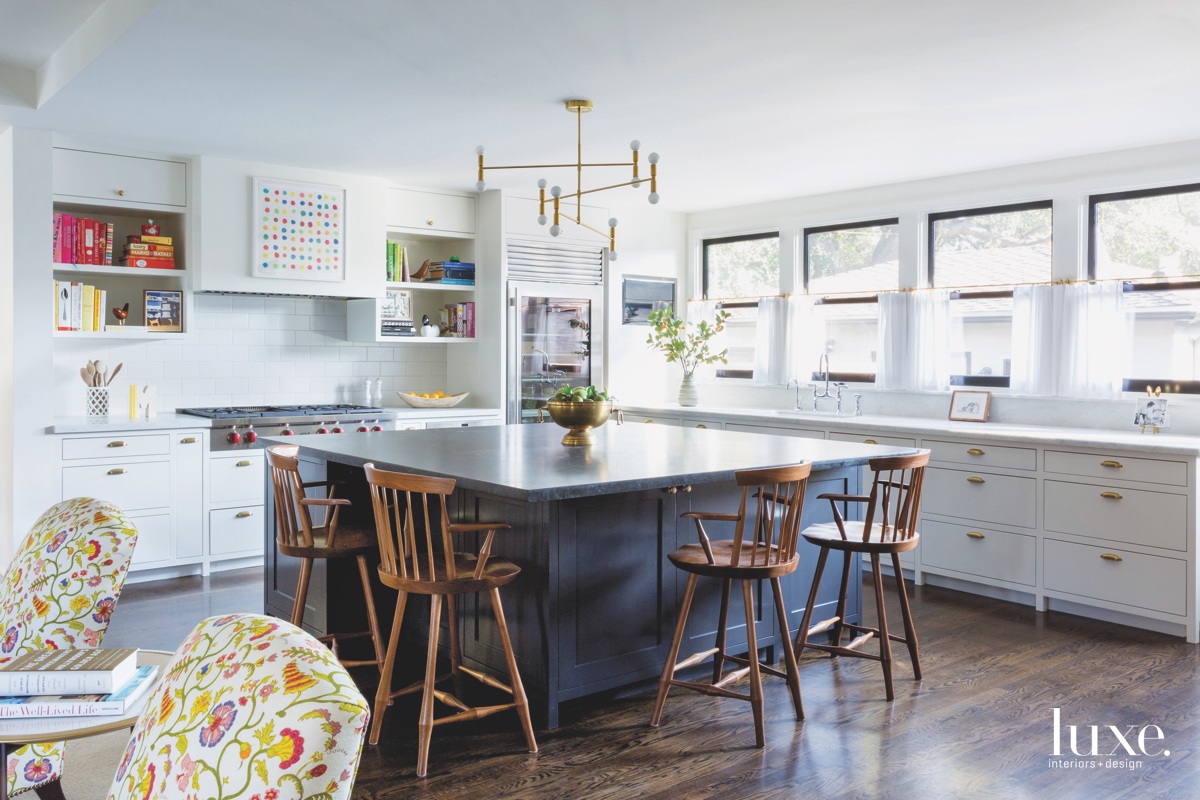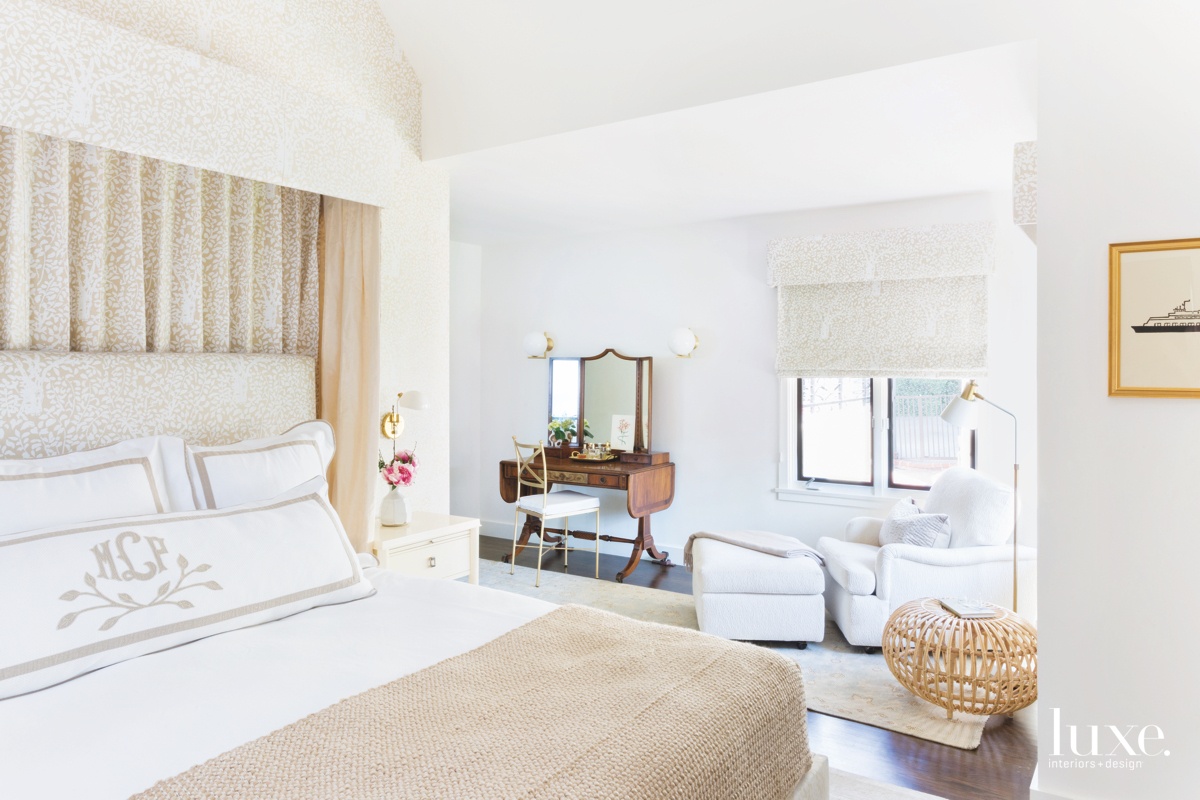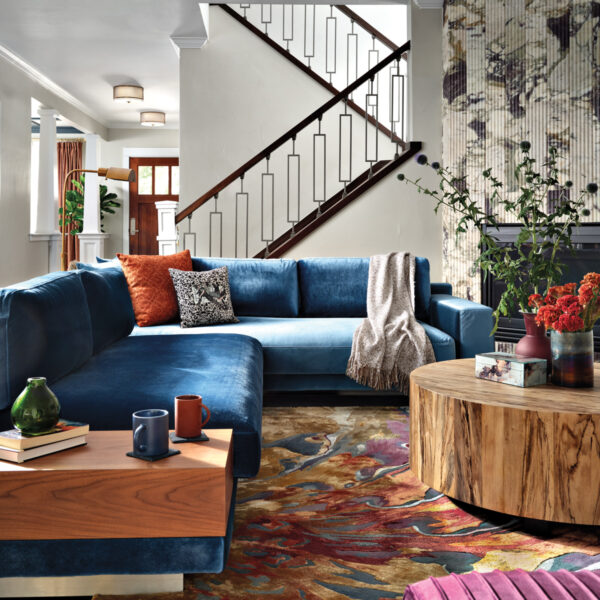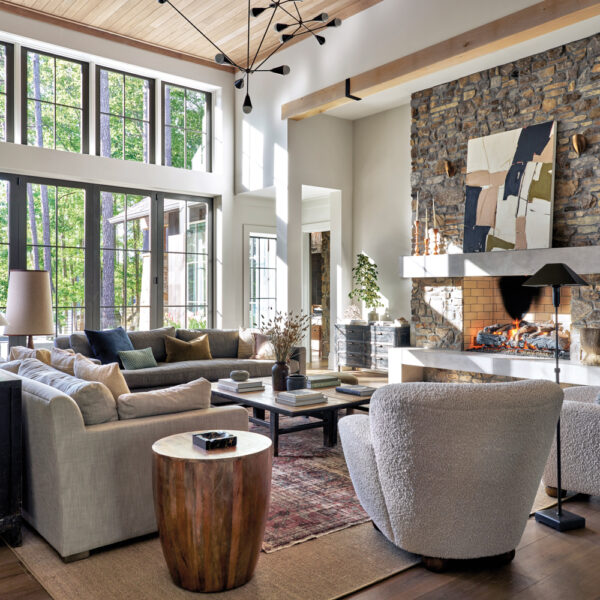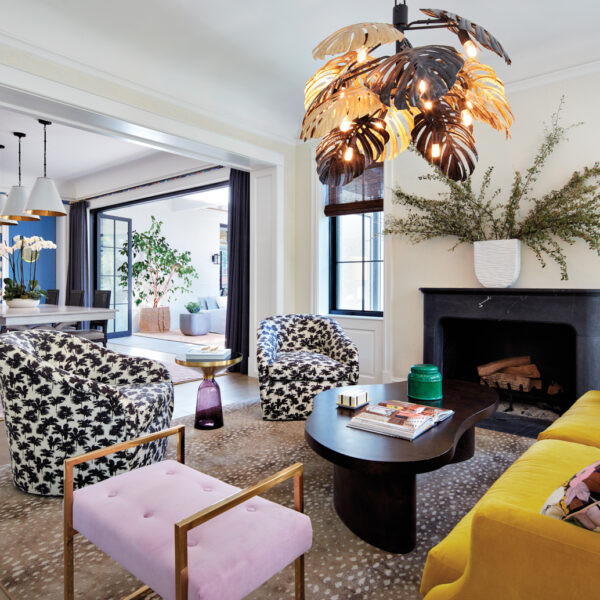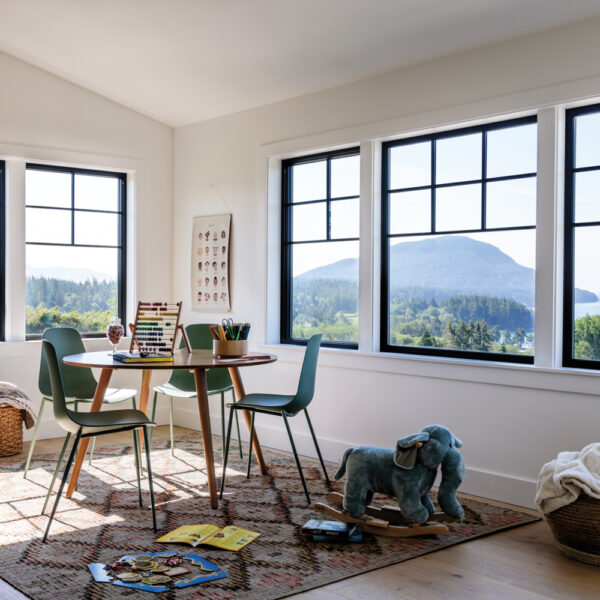When you’re standing inside the 1930s country French-style house interior designer Amy Sklar and architect Barbara Bestor recently reimagined for a family in Altadena, you can’t help but recall the movie The Ice Storm, or one of Wes Anderson’s brightly colored and nostalgic film sets.
The starting point for the interior architecture was to create larger, more open spaces–and smaller, cozy ones, too. But Bestor almost never achieves that without the employment of color. “I use color to transform something that’s boring or dated,” says Bestor.
And for the furnishings, Sklar used color and pattern in much the same way. “There are George Smith chairs in the living room that I covered with a happy floral print by Raoul Textiles,” the designer says, describing the bright yellow, pink, red, blue and green upholstery. “But the coffee table is a solid lacquered navy blue that functions as a neutral. I wanted vibrancy without a riot of color. Too many layers would’ve made this granny-ish.”
Sklar’s judicious color and pattern application is the difference between a home that looks like the set of The Ice Storm and a home that recalls the best aspects of a bygone sensibility. “I was very conscious of giving the house a base that’s simple, flexible and clean,” the designer says. “But you’ve no idea how refreshing it was to be able to do something you would absolutely never see in a typical Los Angeles home.”

